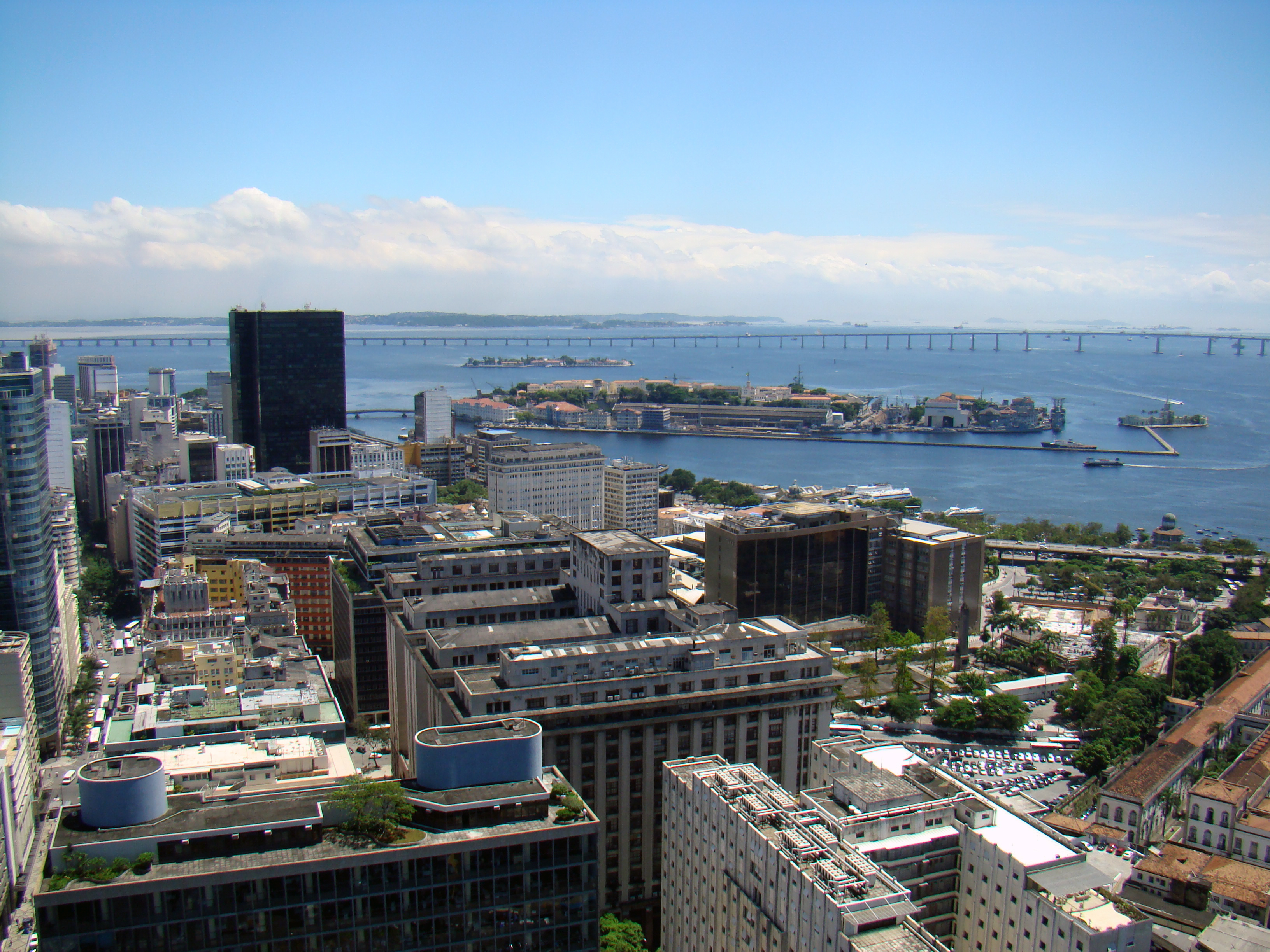|
Guaratiba Group
The Guaratiba Group ( pt, Grupo Guaratiba) is a geological group of the Santos Basin offshore of the Brazilian states of Rio de Janeiro, São Paulo, Paraná and Santa Catarina. The group forms the pre-salt layer in the petroleum-rich basin and hosts the biggest oil fields of Brazil, as Tupi, Júpiter and many more. The group contains, depending on the definition, three to four formations and dates to the Early Cretaceous period; Hauterivian to Early Aptian epochs. The total thickness of the group, representing the first phase of sedimentation after the break-up of Gondwana in the Santos Basin, is estimated at . Etymology The formation is named after Guaratiba, a neighbourhood in the west of Rio de Janeiro. Description The Guaratiba Group is thick and subdivided into three formations, four if the underlying basalts of the Camboriú Formation are included,Clemente, 2013, p.20 and five if the salt layer of the Ariri Formation is included,Contreras, 2011, p.22 from old to ... [...More Info...] [...Related Items...] OR: [Wikipedia] [Google] [Baidu] |
Hauterivian
The Hauterivian is, in the geologic timescale, an age in the Early Cretaceous Epoch or a stage in the Lower Cretaceous Series. It spans the time between 132.9 ± 2 Ma and 129.4 ± 1.5 Ma (million years ago). The Hauterivian is preceded by the Valanginian and succeeded by the Barremian.See Gradstein ''et al.'' (2004) for a detailed geologic timescale Stratigraphic definitions The Hauterivian was introduced in scientific literature by Swiss geologist Eugène Renevier in 1873. It is named after the Swiss town of Hauterive at the shore of Lake Neuchâtel. The base of the Hauterivian is defined as the place in the stratigraphic column where the ammonite genus '' Acanthodiscus'' first appears. A reference profile for the base (a GSSP) was officially ratified by the International Union of Geological Sciences in December of 2019, and is placed in La Charce, France. The top of the Hauterivian (the base of the Barremian) is at the first appearance of ammonite species ''Spitidis ... [...More Info...] [...Related Items...] OR: [Wikipedia] [Google] [Baidu] |
Rio De Janeiro (state)
Rio de Janeiro () is one of the 27 federative units of Brazil. It has the second largest economy of Brazil, with the largest being that of the state of São Paulo. The state, which has 8.2% of the Brazilian population, is responsible for 9.2% of the Brazilian GDP. The state of Rio de Janeiro is located within the Brazilian geopolitical region classified as the Southeast (assigned by IBGE). Rio de Janeiro shares borders with all the other states in the same Southeast macroregion: Minas Gerais ( N and NW), Espírito Santo ( NE) and São Paulo ( SW). It is bounded on the east and south by the South Atlantic Ocean. Rio de Janeiro has an area of . Its capital is the city of Rio de Janeiro, which was the capital of the Portuguese Colony of Brazil from 1763 to 1815, of the following United Kingdom of Portugal, Brazil and the Algarves from 1815 to 1822, and of later independent Brazil as a kingdom and republic from 1822 to 1960. The state's 22 largest cities are Rio de Janeiro, ... [...More Info...] [...Related Items...] OR: [Wikipedia] [Google] [Baidu] |
Carbonate
A carbonate is a salt of carbonic acid (H2CO3), characterized by the presence of the carbonate ion, a polyatomic ion with the formula . The word ''carbonate'' may also refer to a carbonate ester, an organic compound containing the carbonate group C(=O)(O–)2. The term is also used as a verb, to describe carbonation: the process of raising the concentrations of carbonate and bicarbonate ions in water to produce carbonated water and other carbonated beverageseither by the addition of carbon dioxide gas under pressure or by dissolving carbonate or bicarbonate salts into the water. In geology and mineralogy, the term "carbonate" can refer both to carbonate minerals and carbonate rock (which is made of chiefly carbonate minerals), and both are dominated by the carbonate ion, . Carbonate minerals are extremely varied and ubiquitous in chemically precipitated sedimentary rock. The most common are calcite or calcium carbonate, CaCO3, the chief constituent of limestone (as ... [...More Info...] [...Related Items...] OR: [Wikipedia] [Google] [Baidu] |
Tupi
Tupi may refer to: * Tupi people of Brazil * Tupi or Tupian languages, spoken in South America ** Tupi language, an extinct Tupian language spoken by the Tupi people * Tupi oil field off the coast of Brazil * Tupi Paulista, a Brazilian municipality * Tupi, South Cotabato, a Philippine municipality ** Tupi National High School * Tupi class, a Brazilian Navy version of the Type 209 submarine ** ''Tupi'' (submarine), the lead submarine of the class, commissioned in 1989 * Tupi Football Club, a Brazilian football (soccer) club * Brazil national rugby union team, nicknamed Os Tupis * Rede Tupi, the first Brazilian TV network (1950–1980) *The tupi blackberry, a Mexican hybrid of the Comanche and Uruguai varieties * Tupi (software), free and open source 2D animation software * Tupí fermented cheese See also * Tupiniquim, an Amerindian tribe who live in Brazil * Tupy (other) Tupy may refer to: * Tupy, a cultivar of blackberry * Tupy Futebol Clube, a Brazilian football club ... [...More Info...] [...Related Items...] OR: [Wikipedia] [Google] [Baidu] |
Half-graben Sedimentation
A half-graben is a geological structure bounded by a fault along one side of its boundaries, unlike a full graben where a depressed block of land is bordered by parallel faults. Rift and fault structure A rift is a region where the lithosphere extends as two parts of the Earth's crust pull apart. Often a rift will form in an area of the crust that is already weakened by earlier geological activity. Extensional faults form parallel to the axis of the rift. An extensional fault may be seen as a crack in the crust that extends down at an angle to the vertical. As the two sides pull apart, the hanging wall ("hanging over" the sloping fault) will move downward relative to the footwall. The crust thins and sinks, forming a rift basin. Warm mantle material wells up, melting the crust and often causing volcanoes to emerge in the rift basin. Extensional basins may appear to be caused by a graben, or depressed block of land, sinking between parallel normal faults that dip towards th ... [...More Info...] [...Related Items...] OR: [Wikipedia] [Google] [Baidu] |
Basalt
Basalt (; ) is an aphanitic (fine-grained) extrusive igneous rock formed from the rapid cooling of low-viscosity lava rich in magnesium and iron (mafic lava) exposed at or very near the surface of a rocky planet or moon. More than 90% of all volcanic rock on Earth is basalt. Rapid-cooling, fine-grained basalt is chemically equivalent to slow-cooling, coarse-grained gabbro. The eruption of basalt lava is observed by geologists at about 20 volcanoes per year. Basalt is also an important rock type on other planetary bodies in the Solar System. For example, the bulk of the plains of Venus, which cover ~80% of the surface, are basaltic; the lunar maria are plains of flood-basaltic lava flows; and basalt is a common rock on the surface of Mars. Molten basalt lava has a low viscosity due to its relatively low silica content (between 45% and 52%), resulting in rapidly moving lava flows that can spread over great areas before cooling and solidifying. Flood basalts are thick sequence ... [...More Info...] [...Related Items...] OR: [Wikipedia] [Google] [Baidu] |
Rio De Janeiro
Rio de Janeiro ( , , ; literally 'River of January'), or simply Rio, is the capital of the Rio de Janeiro (state), state of the same name, Brazil's List of Brazilian states by population, third-most populous state, and the List of largest cities in Brazil, second-most populous city in Brazil, after São Paulo. Listed by the Globalization and World Cities Research Network, GaWC as a global city, beta global city, Rio de Janeiro is the Largest cities in the Americas, sixth-most populous city in the Americas. Part of the city has been designated as a World Heritage Site, named "Rio de Janeiro: Carioca Landscapes between the Mountain and the Sea", on 1 July 2012 as a Cultural Landscape. Founded in 1565 by the Portuguese people, Portuguese, the city was initially the seat of the Captaincies of the Portuguese Empire, Captaincy of Rio de Janeiro, a domain of the Portuguese Empire. In 1763, it became the capital of the State of Brazil, a List of states of the Portuguese Empire, state o ... [...More Info...] [...Related Items...] OR: [Wikipedia] [Google] [Baidu] |
Gondwana
Gondwana () was a large landmass, often referred to as a supercontinent, that formed during the late Neoproterozoic (about 550 million years ago) and began to break up during the Jurassic period (about 180 million years ago). The final stages of break-up, involving the separation of Antarctica from South America (forming the Drake Passage) and Australia, occurred during the Paleogene. Gondwana was not considered a supercontinent by the earliest definition, since the landmasses of Baltica, Laurentia, and Siberia were separated from it. To differentiate it from the Indian region of the same name (see ), it is also commonly called Gondwanaland. Gondwana was formed by the accretion of several cratons. Eventually, Gondwana became the largest piece of continental crust of the Palaeozoic Era, covering an area of about , about one-fifth of the Earth's surface. During the Carboniferous Period, it merged with Laurasia to form a larger supercontinent called Pangaea. Gondwana ... [...More Info...] [...Related Items...] OR: [Wikipedia] [Google] [Baidu] |
Early Cretaceous
The Early Cretaceous (geochronological name) or the Lower Cretaceous ( chronostratigraphic name), is the earlier or lower of the two major divisions of the Cretaceous. It is usually considered to stretch from 145 Ma to 100.5 Ma. Geology Proposals for the exact age of the Barremian-Aptian boundary ranged from 126 to 117 Ma until recently (as of 2019), but based on drillholes in Svalbard the defining early Aptian Oceanic Anoxic Event 1a (OAE1a) was carbon isotope dated to 123.1±0.3 Ma, limiting the possible range for the boundary to c. 122–121 Ma. There is a possible link between this anoxic event and a series of Early Cretaceous large igneous provinces (LIP). The Ontong Java- Manihiki- Hikurangi large igneous province, emplaced in the South Pacific at c. 120 Ma, is by far the largest LIP in Earth's history. The Ontong Java Plateau today covers an area of 1,860,000 km2. In the Indian Ocean another LIP began to form at c. 120 Ma, the Kergue ... [...More Info...] [...Related Items...] OR: [Wikipedia] [Google] [Baidu] |
Jupiter Field
Jupiter is the fifth planet from the Sun and the largest in the Solar System. It is a gas giant with a mass more than two and a half times that of all the other planets in the Solar System combined, but slightly less than one-thousandth the mass of the Sun. Jupiter is the third brightest natural object in the Earth's night sky after the Moon and Venus, and it has been observed since prehistoric times. It was named after the Roman god Jupiter, the king of the gods. Jupiter is primarily composed of hydrogen, but helium constitutes one-quarter of its mass and one-tenth of its volume. It probably has a rocky core of heavier elements, but, like the other giant planets in the Solar System, it lacks a well-defined solid surface. The ongoing contraction of Jupiter's interior generates more heat than it receives from the Sun. Because of its rapid rotation, the planet's shape is an oblate spheroid: it has a slight but noticeable bulge around the equator. The outer atmosphere is div ... [...More Info...] [...Related Items...] OR: [Wikipedia] [Google] [Baidu] |
Tupi Oil Field
The Tupi oil field (reverted from Lula oil field) is a large oil field located in the Santos Basin, off the coast of Rio de Janeiro, Brazil. The field was originally nicknamed in honor of the Tupi people and later named after the mollusc, however it was also ambiguously similar to the name of former Brazilian president Luiz Inacio Lula da Silva. It is considered to be the Western Hemisphere's largest oil discovery of the last 30 years. History left, Brazilian President Lula da Silva on the launch of the P-52 oil Platform The Tupi field was discovered in October 2006 by Petrobras. The former president of Brazil, Luiz Inácio Lula da Silva called the field ''second independence for Brazil''. The field was originally named Tupi but in 2010 it was renamed Lula. The name 'Lula' means squid in Portuguese but also refers to Luiz Inácio Lula da Silva. The upper estimate of of recoverable oil would be enough to meet the total global demand for crude oil for about three months ... [...More Info...] [...Related Items...] OR: [Wikipedia] [Google] [Baidu] |
Pre-salt Layer
The pre-salt layer is a diachronous series of geological formations on the continental shelves of extensional basins formed after the break-up of Gondwana, characterised by the deposition of thick layers of evaporites, mostly salt. Some of the petroleum that was generated from sediments in the pre-salt layer has not migrated upward to the post-salt layers above due to salt domes. This is especially common off the coast of Africa and Brazil. Total pre-salt oil reserves are thought to be a significant fraction of the world's oil reserves. According to Brazilian oil and gas company Petrobras, the oil and natural gas reserves lie below an approximately thick layer of salt, which in turn is beneath more than of post-salt sediments in places, which in turn is under water depths between in the South Atlantic. Because of this, drilling through the rock and salt to extract the pre-salt oil and gas is very expensive. Brazil The oil reserves found in the pre-salt layer of the ... [...More Info...] [...Related Items...] OR: [Wikipedia] [Google] [Baidu] |







